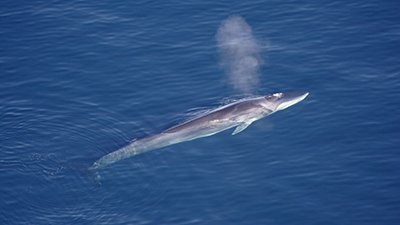
Giant Coral Reefs—Too Old for a Young Earth?
What do you know about coral reefs? Most people would answer this question with some bit of information gathered from a documentary or animated film set in coral reefs. While few people have spent much time in coral reefs, many could identify them as places of exquisite beauty and diversity. A visit to any aquarium in the world will demonstrate this, as many exhibits are dedicated to these essential ecosystems.
Marine ecologists also recognize coral reefs as places with incredible diversity and sources of diversity for many other marine environments. In fact, almost 25% of the surveyed marine animal groups living in open oceans began in reefs and spread into other ecosystems.1 What is it about coral reefs that allow them to support so much life and generate diversity?
Coral reefs form when reef-building corals and other creatures pull calcium out of the water and build a hard skeleton. As these organisms grow and die, the skeleton provides a site for new individuals to settle on, increasing the size of the reef and providing plenty of food and shelter for many animals.2 The height provides another dimension and adds environmental complexity. As the environment gets more complex, there are more spaces for animals to spread out and diversify.
Possibly the best example of this is the Great Barrier Reef off the coast of Australia. The reef is over 2,000 km (1,375 mi.) long, providing a home for thousands of species and food for thousands more.3 This enormous structure is actually a collection of several different reefs, which grow at different rates. The thickest reefs are in the deepest waters, furthest from the coast. Here, the reefs are about 180 feet thick.4 How could such a large reef system with many generations of coral have grown in the approximately 4,400 years since Noah’s Flood?
We know that reefs can grow incredibly fast.
This challenge is presented by some evolutionary biologists, who are influenced by the idea of uniformitarianism. Under this view, the reefs must have always grown at the same rate. If you only use the lowest rate of growth in the reef, you would assume an older age for the reef. However, we know that reefs can grow incredibly fast. For instance, Pandora Reef, part of The Great Barrier Reef, is over 30 feet thick, and grew in about 660 years.5 With growth rates up to 25 mm per year, the entire system of reefs could easily have been built during a Biblical time scale.6 Even if you use the average growth rate (15 mm per year), you could build the entire reef in less than 3,700 years. Accordingly, fossil records indicate that the reefs have a recent history.7
Growth Rate Considerations
While growth rates vary substantially among coral individuals and species,8 there are many factors that contribute to increasing coral growth rates. Coral needs sunlight, carbon dioxide, inorganic nutrients, organic food, calcium, and carbonate in order to grow.9 Additionally, water movement, water temperature, water pH, and disturbance all impact coral growth rates.10 Considering all of these features, where would coral grow fastest? Surprisingly, despite all we know about coral reefs, this isn’t an easy question to answer. In fact, each type of coral seems to require a different optimal combination of sunlight, carbon dioxide, food supply, and water movement.11 We do know that some species of coral can grow nearly five mm per week, and that foreign corals typically grow faster than native corals.12 Would an ocean recovering after a global flood provide sites for coral to grow in new areas under optimal conditions?
Although we can’t recreate (nor should we) a global flood, Scripture does provide some clues about the events during the early Flood. The pre-Flood land was likely completely eroded away after the Flood.13 This incredible amount of erosion would have buried reefs around the globe under enormous amounts of sediment. Combining the burial with massive water flow likely would have destroyed most of the pre-Flood reef ecosystems. As the floodwater drained and reefs reformed, displaced coral could have resettled in areas near the shore. These “foreign” corals would have the potential to grow at rates at least as high as the highest rates recorded today. If the reefs could grow at 5mm per week, the world’s reefs could be restored in a very short period of time. There really is no reason to doubt that all of the reefs around the globe could have formed in the 4,000–5,000 years since the end of the Flood. In fact, given the above scenario, they could have formed within 500–1,000 years.
Footnotes
- P. Berardelli, “Coral Reefs Are Evolutionary Cradles,” Science, January 7, 2010, http://www.sciencemag.org/news/2010/01/coral-reefs-are-evolutionary-cradles.
- R. Carter, “‘Ancient’ Coral Growth Layers,” Creation 26, no. 3 (December 2012): 50–53.
- B. Daley, The Great Barrier Reef: An Environmental History, New York: Routledge, 2014.
- P. Read and A. Snelling, “How Old Is Australia’s Great Barrier Reef?” Creation 8, no. 1 (November 1985): 6–9.
- Ibid.
- Ibid.
- Daley, The Great Barrier Reef: An Environmental History.
- J. M. Lough and N. E. Cantin, “Perspectives on Massive Coral Growth Rates in a Changing Ocean,” The Biological Bulletin 226, no. 3 (June 2014): 187–202, doi:10.1086/BBLv226n3p187; and R. Osinga et al., “The Biology and Economics of Coral Growth,” Marine Biotechnology 13, no. 4 (August 2011): 658–671, doi:10.1007/s10126-011-9382-7.
- Osinga et al., “The Biology and Economics of Coral Growth.”
- Ibid.
- Ibid.
- C. Drury, D. Manzello, and D. Lirman, “Genotype and Local Environmental Dynamically Influence Growth, Disturbance Response and Survivorship in the Threatened Coral, Acropora cervicornis’,” PLoS ONE 12, no. 3 (March 20, 2017): e0174000, doi:10.1371/journal.pone.0174000.
- H. Dickens, “Colossal Water Flows During Early Creation Week and Early Flood,” Answers Research Journal 10: 221–235, https://beta.answersingenesis.org/geology/sedimentation/colossal-water-flows-during-early-creation-week-and-early-flood/.
Recommended Resources

Answers in Genesis is an apologetics ministry, dedicated to helping Christians defend their faith and proclaim the good news of Jesus Christ.
- Customer Service 800.778.3390
- © 2024 Answers in Genesis





